4 Powerful SEO Tips That Still Drive Traffic This Year
With the massive rise of mobile and voice search last year, some people have yet again begun to proclaim the death of SEO. But, while I agree that the way people search has changed a lot over the past twelve months, is SEO actually dying?
Far from it!
To demonstrate the power of very alive SEO, today I’m going to share 4 tried and proven SEO tips that will still drive traffic to your website this year.
1. Grow Your Revenue By Using Long-tail Keywords
Long tail keywords are created when you combine at least three words to form a search query that targets your specific niche.
How do these long-tail keywords help you?
Let’s imagine you’re the owner of a chicken teriyaki recipe site.
According to SEMrush, there are 110,000 people searching for “teriyaki.” At first, you might think “Great! I’ll just use teriyaki as my main keyword!” And while that may seem like a good idea, what percentage of people searching for teriyaki will you actually be able to convince to visit your recipe site? Since most of them are looking for teriyaki restaurants, odds are you won’t get many clicks.
To get your website in front of that niche of people who are looking specifically for teriyaki recipes, you need to use a long-tail keyword. For example, “easy teriyaki chicken recipe.”
Looking at this SEMrush data, you can see how long-tail keywords are so effective. By using the long-tail keyword, your teriyaki recipe website will be discoverable by 2,400 searchers who are seeking exactly what your site offers.
Some SEO tips to help you craft effective long-tail keywords are:
- Make sure you understand your buyer personas.
What kind of questions are they typing into Google? What stage of the buyer’s journey are they in?
Answering questions like these will give you the ability to perfectly tailor your long-tail keywords to your personas’ needs.
- Check what keywords you’re already ranking for and use them.
Use Google Analytics to see what keywords are driving the most traffic to your site. Use these in your long-tails.
- Research what long-tail keywords are currently driving the most traffic.
Two great tools for this are Google auto suggest and SEMRush — use these to see what kind of long-tail queries your personas are making. Or, for a free substitute to SEMRush, check out Neil Patel’s Ubersuggest tool — type in a keyword, click “keyword ideas,” and scroll through the suggestions.
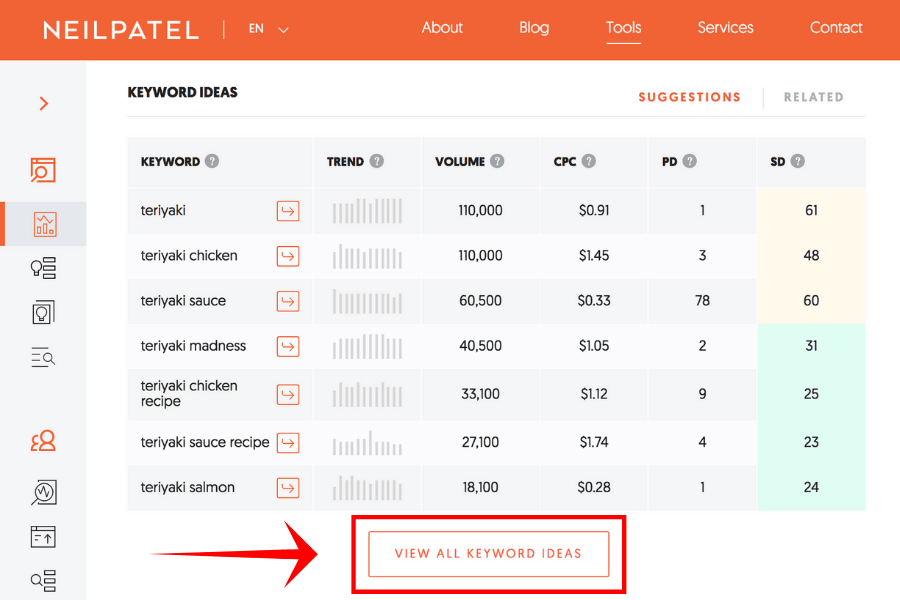
If you don’t know how to use Ubersuggest, here is a quick guide to get you started.
2. Increase Your Website’s Loading Speed
People are impatient. If your website doesn’t load within 3 seconds, 40% of your audience is going to bounce. As your bounce rate increases, your rankings will drop.
Here are three powerful SEO tips to make sure your site is loading quickly:
Run your homepage and any other major pages or posts through the program, and take action based on the Opportunities and Diagnostics reports.
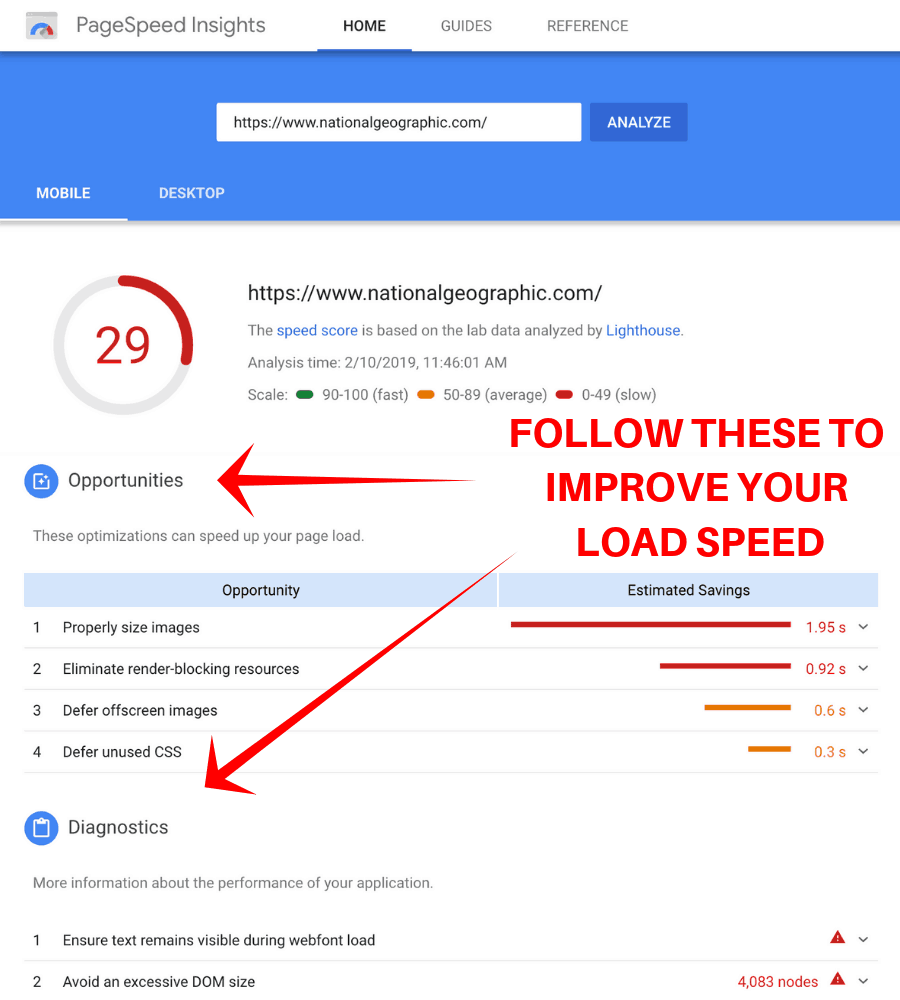
- Make sure that all the images on your site are compressed.
Use a program like Piio.co to optimize images and increase your site’s loading speed.
Browser caching is a fast and easy way to make big speed improvements for your website. Caching saves the basic elements of your site on visitors’ devices, so that when they navigate between pages your logo, menus, and the like, don’t need to be loaded again — increasing loading speed!
3. Build Your Site Authority
Two proven SEO tips to boost your website’s authority:
- Make it easy for your clients to give you social proof.
Put review forms on your product pages, ask previous clients to leave reviews, and show off your review stars where it really counts — in your post’s schema markup.
Written reviews contribute towards content and keyword count, so not only will your future prospects benefit from seeing 5 stars on your product, Google will also rank you higher due to the increase in relevant content and keywords.
Chrome has recently started flagging HTTP sites as “Not Secure” — driving potential clients away from your website.
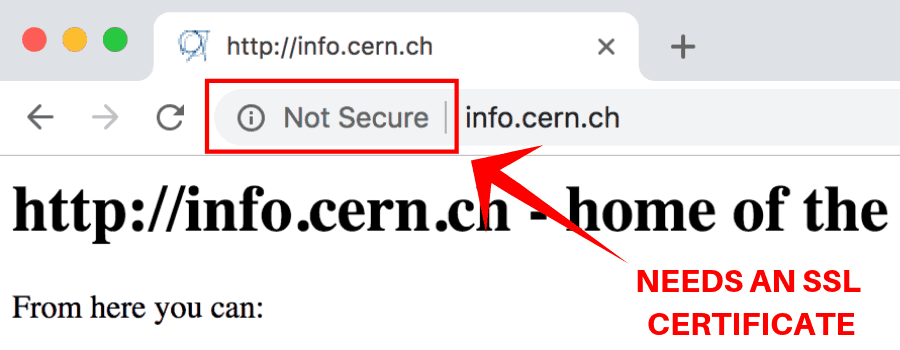
Communicate trust and authority to your prospects by installing an SSL certificate and moving your site to HTTPS.
4. Answer Your Persona’s Questions To Get Featured In Search Snippets
Have you wondered how certain websites get their content featured in a nice little box at the top of the search results? These are called “search snippets” and they look like this:
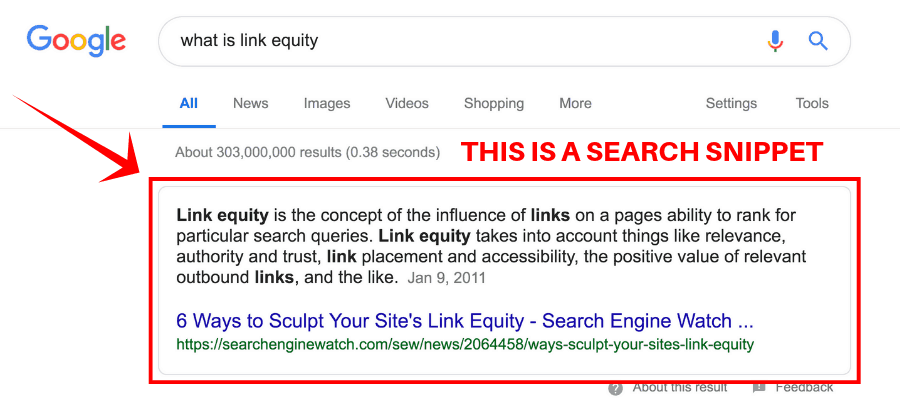
According to a study done by Ahrefs, featured snippets have an 8.6 percent click-through rate.
That’s huge!
But it gets even better.
Being selected for search snippets gives your website double-representation — first in the snippet and again in the results. Wow!
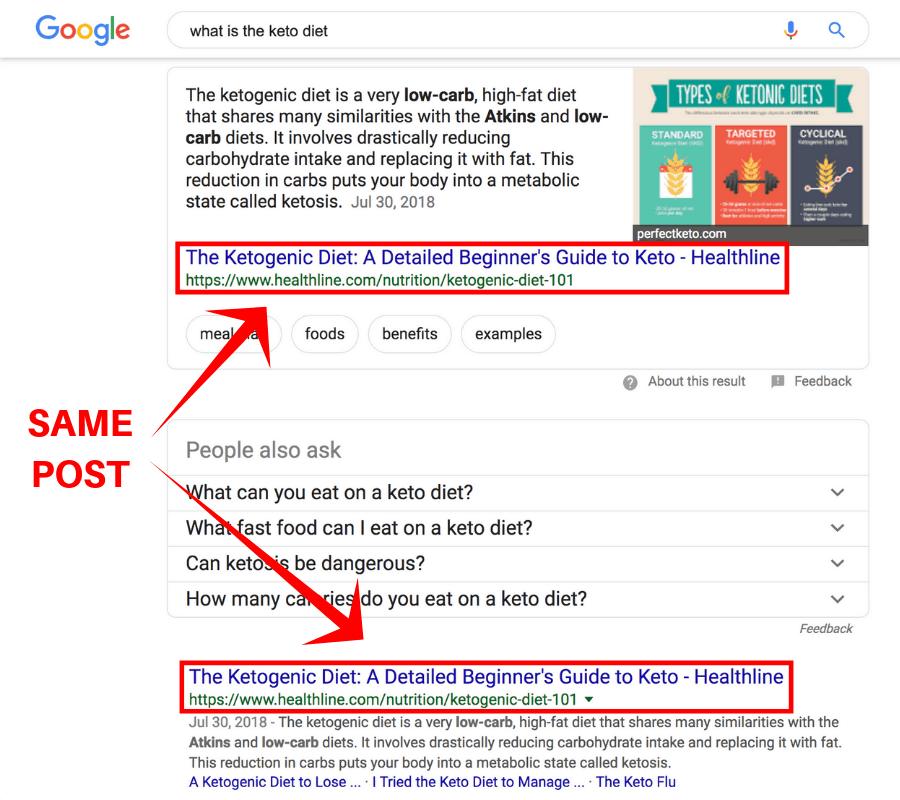
Now that you understand what a powerful SEO tool search snippets can be, let’s get your website to be featured there.
Here are a couple quality SEO tips for getting your website featured in the search snippets:
- First, do keyword research.
Use Answer The Public to see the questions your personas’ are asking. Decide which one you want to answer.
Type the question into Google and take not of the kind of content that is making the search snippet. There are three kinds of content that get featured — tables, lists, and paragraphs. Whichever one Google is currently featuring is what you should also do in your post.
- Write a kick ass post and format it correctly.
To reach the search snippets, your post needs to rank in the top 10. So make sure you follow SEO best practices when creating your content.
Take the question you chose during the research stage, and place the answer as close to the top of your content as possible.
Put the question in an H2 heading and write your answer directly beneath the H2, making sure you keep your answer between 54-58 words.
- Publish and monitor your content.
Track the analytics of your post to make sure it reaches the top 10 search results for your target question.
Make adjustments where necessary.
Once you capture the search snippet, celebrate with some champagne.
Conclusion
SEO is still the primary tool by which to rank your website in 2019. Mobile and voice search may be changing the way people interact with the internet, but the way we do SEO hasn’t changed.
Getting ranked on Google requires diligent research, testing, implementation, more testing, and a continual emphasis on quality — all of these things are SEO.
Combine the tips I gave you today with quality content, and you will see your rankings grow and traffic increase.
